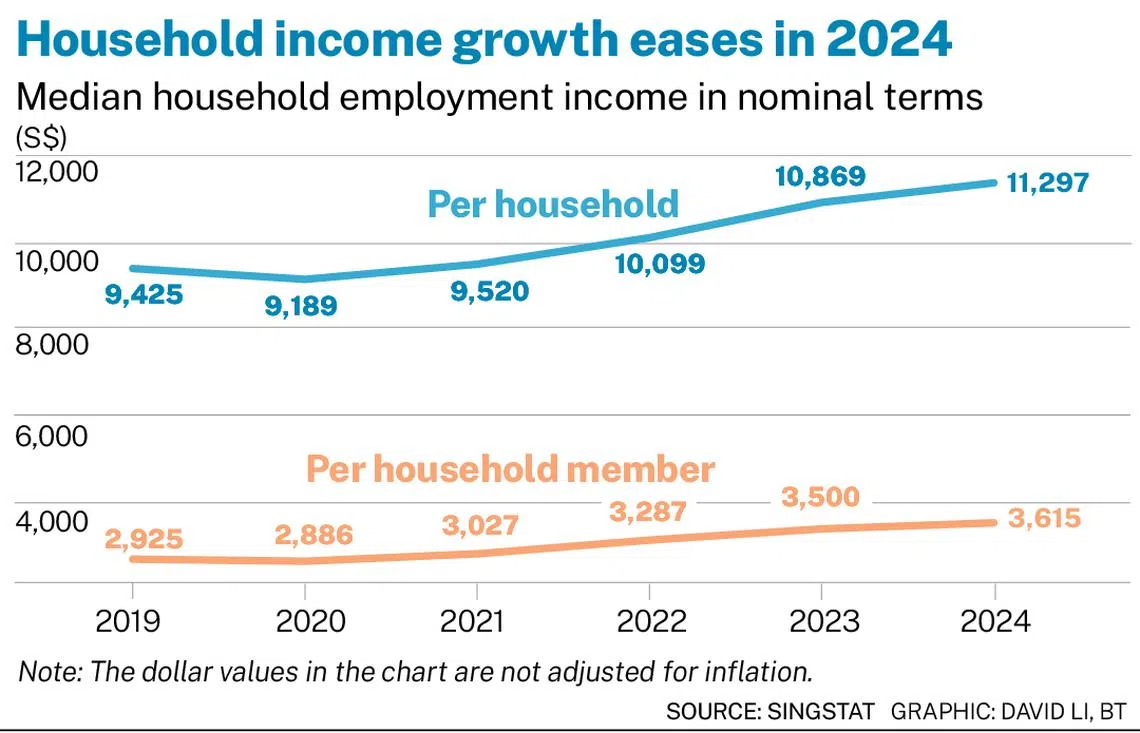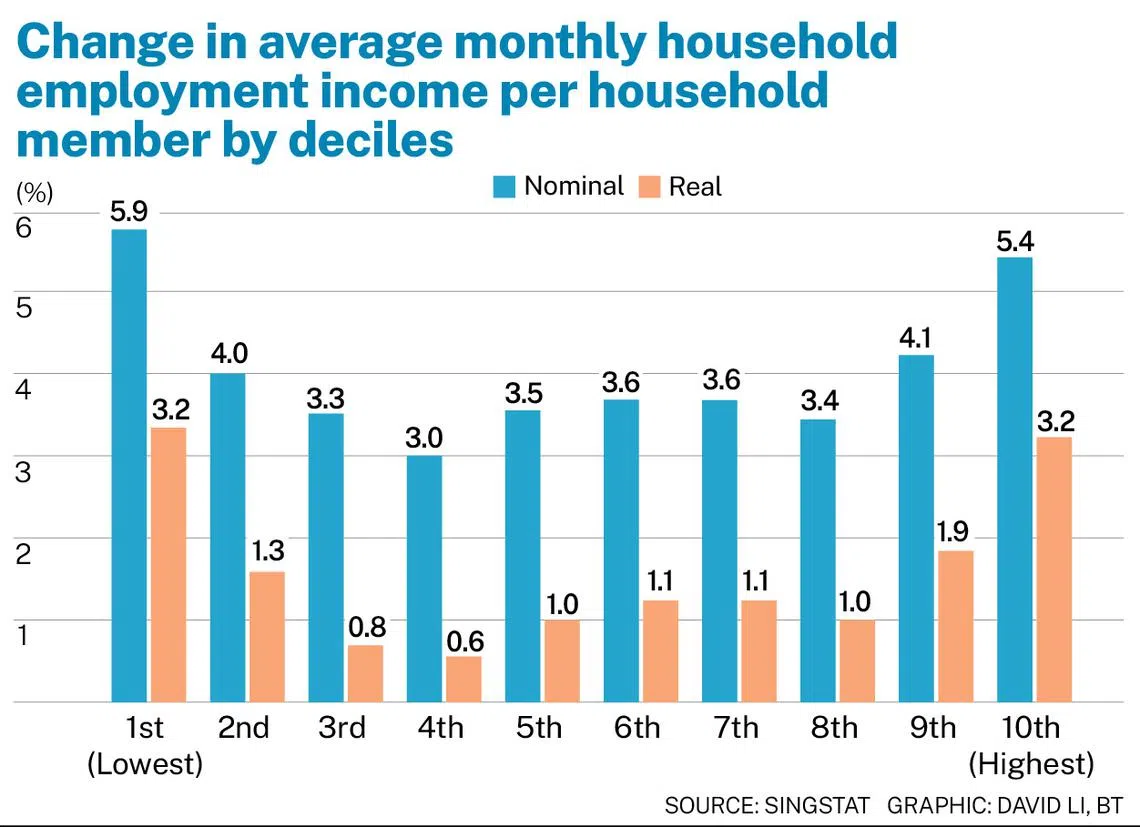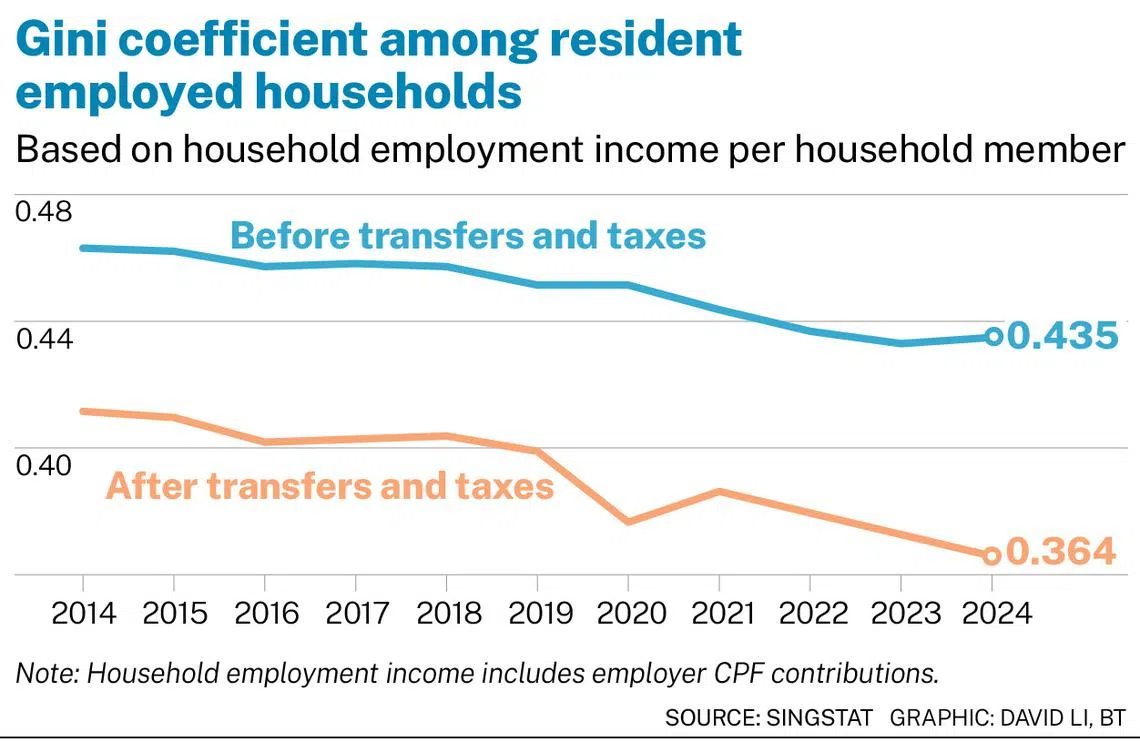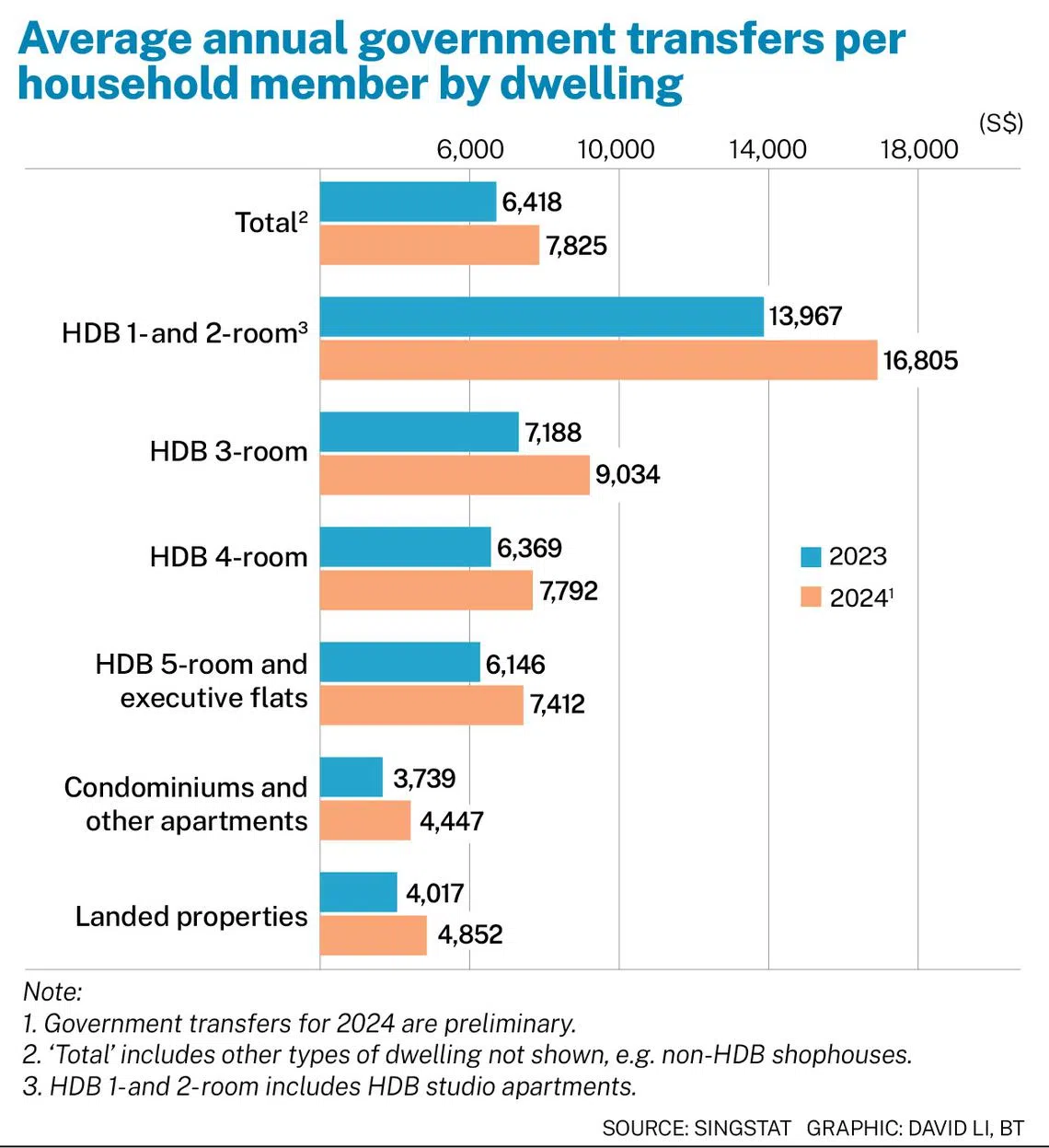Singapore’s real median household income growth in 2024 eases to 1.4%
The increase was 3.9% in nominal terms, to S$11,297

SINGAPORE’S median household employment income rose 1.4 per cent in real terms last year, slower than the year before amid lower inflation, data from the Singapore Department of Statistics (SingStat) showed on Thursday (Feb 13).
In 2023, median household employment income, after accounting for inflation, grew 2.8 per cent.
In nominal terms, median monthly household employment income grew 3.9 per cent to S$11,297 last year, down from 7.6 per cent in 2023.

Headline inflation in 2024 averaged 2.4 per cent, easing significantly from 4.8 per cent the year before.
Accounting for household size, household employment income per household member rose 3.3 per cent in nominal terms to S$3,615 last year. In real terms, however, the increase was only 0.8 per cent.
A separate report by the Ministry of Manpower earlier showed that real median income growth for individuals was 3.4 per cent in 2024.
Over the last five years, median monthly household employment income increased by 3.6 per cent cumulatively, or 0.7 per cent per annum in real terms. Per household member, this translates to a cumulative growth of 6.8 per cent or 1.3 per cent per annum.
The average household employment income per household member increased across all income deciles, SingStat noted. This came in at a rate of 3 to 5.9 per cent in nominal terms, or 0.6 to 3.2 per cent in real terms.

Government transfers
SingStat noted that household income inequality fell in 2024 after accounting for government transfers and taxes.
The Gini coefficient, which measures income inequality, rose to 0.435 in 2024, from 0.433 the year before. A lower value represents lower income inequality.
After adjusting for government transfers and taxes, however, the Gini coefficient was 0.364 in 2024, the lowest since the authorities began keeping such records in 2000. In 2023, the Gini coefficient was 0.371.

SingStat noted that resident households, including those with no employed person, received an average of S$7,825 per household member from government schemes last year. This is about 22 per cent higher than the S$6,418 received in 2023.
“This was due to measures rolled out in 2024 to support households in areas such as cost-of-living, retirement, and healthcare needs,” said SingStat.
Resident households in one-room and two-room Housing and Development Board flats continued to receive the most government transfers, said SingStat. Last year, they received an average of S$16,805 per household member.

The analyses in SingStat’s Key Household Income Trends 2024 report focus on resident households with at least one employed person. Such households constituted 86.3 per cent of all households last year.
Households with no employed persons could have income from non-employment sources, such as rental and investment income.
Decoding Asia newsletter: your guide to navigating Asia in a new global order. Sign up here to get Decoding Asia newsletter. Delivered to your inbox. Free.
Copyright SPH Media. All rights reserved.


